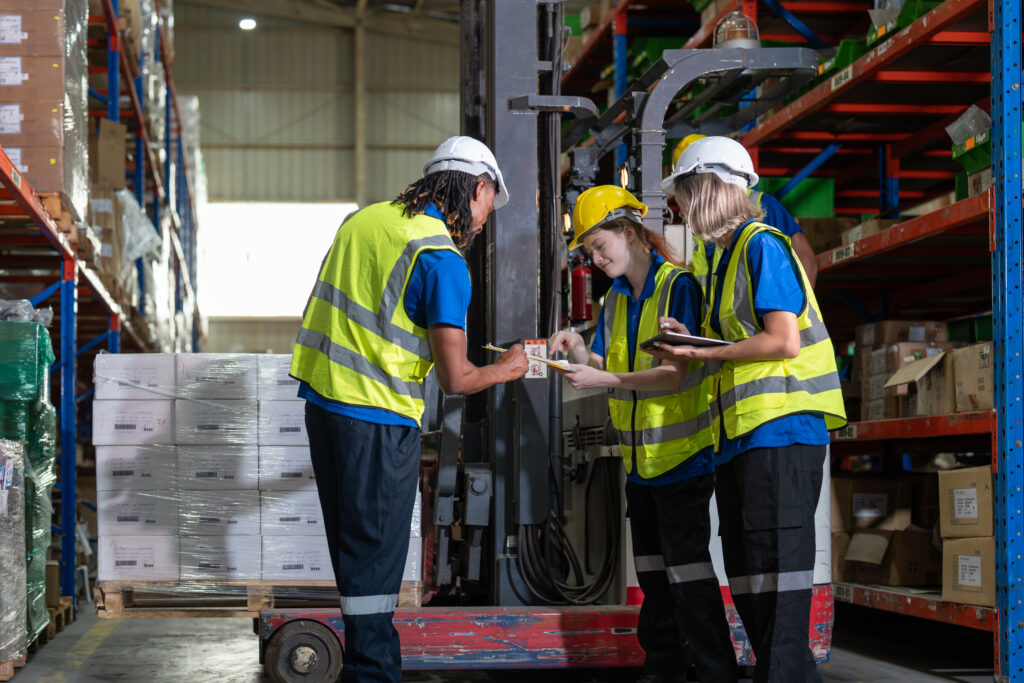A while back, a growing e-commerce business hit a roadblock. Warehouses were packed, storage costs were through the roof, and delivery delays were upsetting customers.
Then, they switched to cross-docking, and everything changed.
By skipping long-term storage and moving products straight from incoming to outgoing shipments, they saw immediate results in the form of cross docking benefits.
Cross-docking benefits like reduced storage costs, quicker deliveries, and fewer product damages completely transformed their supply chain. They weren’t just saving money; they were running smoother than ever.
This isn’t just their win; it’s a logistics strategy that works across industries. If you’re tired of the usual bottlenecks and spiraling costs, maybe it’s time to give cross-docking benefits a closer look.
Let’s unpack how this simple yet impactful approach can work for your growing business.
What is Cross Docking Meaning?
Wondering what is cross docking meaning? It means skipping the traditional warehouse storage process and moving goods directly from incoming shipments to outgoing ones.
Instead of storing products for days or weeks, they’re quickly sorted and transferred to their destination.
To put it simply, cross docking definition revolves around speed and simplicity.
It is like a truck unloading goods at a warehouse, where they’re immediately loaded onto another truck heading out.
Cross docking is a faster and more streamlined way to get products from point A to point B without unnecessary delays.
Whether you’re in retail, manufacturing, or e-commerce, this method can help optimize your logistics and keep operations running smoothly.
Types of Cross Docking
Cross docking isn’t a one-size-fits-all solution, it comes in different types to suit various business needs.
Each type is tailored to handle specific operations, whether it’s sorting goods for different destinations, consolidating shipments, or preparing items for immediate delivery.
Now that you know what is cross docking meaning, we will break down the main types and what makes each one unique.
1. Continuous Cross-Docking
This approach keeps goods flowing continuously through the cross dock warehouse, eliminating the need for storage.
Products are unloaded from inbound trucks and immediately loaded onto outbound vehicles heading to their destinations.
It is highly efficient for items in constant demand, like food or other high-turnover products.
This approach requires precise coordination between suppliers, carriers, and the facility to ensure smooth operations and rapid delivery.
2. Consolidation Cross-Docking
Consolidation cross-docking involves combining several smaller shipments into one larger load.
This reduces transportation costs by shipping fewer, fuller loads rather than multiple smaller ones.
Unlike continuous cross-docking, this method requires temporary storage to gather enough products for a full truckload.
Many less-than-truckload (LTL) carriers and international freight forwarders rely on this method to streamline costs and operations.
3. Deconsolidation Cross-Docking
This method works in reverse, where a large incoming shipment is broken into smaller loads at the cross-docking facility.
These smaller shipments are then distributed to individual customers or locations.
For instance, retail stores often receive bulk shipments at distribution centers, where they are split into smaller batches for delivery to specific stores.
This approach helps ensure timely and organized delivery across multiple destinations.
Each cross-docking type plays a crucial role in keeping supply chains efficient at cross dock warehouses, and choosing the right method for your operations can significantly impact cost and delivery times.
Top 5 Cross Docking Benefits You Should Know

Cross docking is a smart way to keep your supply chain moving smoothly.
Instead of storing goods for long periods, it helps move them quickly from one truck to another, saving both time and money.
However, the cross docking benefits don’t stop there, it can also speed up deliveries and make managing inventory much easier.
Here are the top five benefits that show why cross docking is worth considering.
1. Faster Shipping
In today’s fast-paced market, speed matters.
Cross docking helps businesses deliver goods faster by bypassing long-term storage.
Instead of sitting in warehouses, products move directly from inbound shipments to outbound trucks, ensuring they reach customers and partners quickly.
This method is a game-changer for retail and B2B sellers who need to meet tight delivery expectations.
- Streamlines the transfer of goods from suppliers to customers.
- Minimizes delays by avoiding unnecessary storage time.
- Keeps businesses competitive with faster turnaround times.
With cross docking, you’re not just saving delivery time, you’re staying ahead in an increasingly demanding market.
2. Lower Inventory Storage Costs
Warehouse space doesn’t come cheap, and cross docking offers a smarter alternative.
On average, businesses carry $142,000 worth of excess inventory beyond what’s needed to meet customer demand.
This unnecessary surplus not only ties up capital but also adds to storage costs.
By reducing or eliminating the need for storage, businesses can cut down on costs while keeping operations efficient.
Products spend less time in transit hubs, and the need for inventory tracking is significantly reduced, freeing up resources for other priorities.
- Lowers expenses tied to warehouse rental and maintenance.
- Reduces costs associated with managing and tracking inventory.
- Frees up capital to invest in other areas of the supply chain.
Cross docking isn’t just cost-effective; it’s a smarter way to streamline logistics and improve profitability.
By cutting storage costs, cross docking allows businesses to focus on delivering value and staying competitive.
3. Reduced Risks of Cargo Damage
Handling goods in warehouses comes with its challenges, forklifts, stacking, and frequent movement increase the risk of accidents and damage.
The less your goods are handled, the lower the chances of something going wrong.
Cross-docking minimizes these risks by transferring items directly from inbound trucks to outbound ones, skipping unnecessary storage or handling.
With fewer steps involved, your cargo is safer and reaches its destination in top condition.
At Newl, our cross-docking services are designed to ensure just that, less handling, less risk, and more peace of mind.
4. Seamless Adaption to New Technologies
Cross-docking is built for the future.
As technologies like autonomous trucks become a reality, this logistics method will easily integrate with innovations that reduce costs and boost efficiency.
Automation could soon eliminate the need for manual handling, with goods moving seamlessly from shipper to transport without additional labor.
Here’s how cross-docking keeps you future-ready:
- Integrates with emerging tech like autonomous trucks effortlessly.
- Reduces labor costs by streamlining automated processes.
- Adapts to evolving logistics trends with minimal operational adjustments.
If your business is already minimizing warehouse use, you’re one step closer to benefiting from these changes.
Cross-docking keeps your operations flexible, forward-thinking, and ready for what’s next.
5. Decreased Labor Costs
One of the major cross docking benefits is how much you save on labor. By skipping the need for long-term warehouse storage, there’s way less handling involved.
Instead of routing products into storage, managing them as inventory, and later retrieving them for shipping, workers simply transfer goods from incoming trucks to outgoing ones.
It’s straightforward, efficient, and cuts out the extra steps that add time and cost.
Plus, with fewer hands required to move items around, your team can focus on more strategic tasks, boosting productivity across the board.
Less hassle, more savings, that’s the power of cross-docking.
Partner with Newl for Reliable Cross-Docking Services
A small business struggling with fluctuating inventory levels found themselves in a logistical nightmare.
Goods were piling up in storage, shipments were delayed, and operational costs were skyrocketing. That’s when they partnered with Newl.
By using our cross-docking services, their supply chain was simplified.
Products moved smoothly from inbound trucks to outbound shipments, avoiding unnecessary storage and delays. Soon, they were meeting demand effortlessly and saving money on operational costs.
Here’s what Newl offers with its cross-docking services:
1. Efficient Scheduling
Timely coordination of inbound and outbound shipments to eliminate delays.
2. State-of-the-Art Facilities
Advanced setups designed for fast, seamless transfers.
3. Comprehensive Support
From planning to execution, we’ve got your logistics covered.
Let us show you how to simplify your operations. Schedule a call with us today to discover the difference Newl’s cross-docking services can make for your business.
Final Thoughts
Cross-docking is more than just a logistics strategy, it’s a smart way to streamline operations, cut unnecessary costs, and improve delivery efficiency.
By reducing storage needs and minimizing handling, businesses can ensure goods move faster and more reliably through the supply chain.
Whether you’re dealing with high-demand products or seasonal surges, cross-docking offers a flexible and efficient solution to keep operations running smoothly.
It’s a practical approach that meets the demands of today’s fast-paced logistics world.
Frequently Asked Questions
1. Is cross-docking expensive?
Cross-docking can actually save on shipping costs by reducing the need for multiple shipments and returns.
While the cost varies depending on your industry and location, it generally accounts for around 10% of your annual sales volume.
2. What is the difference between docking and cross-docking?
Docking involves parking a ship at the port, while cross-docking focuses on transferring goods from one mode of transport to another without long-term storage.
Cross-docking eliminates the time and expense associated with storing products in warehouses.
3. What is the critical period of docking?
The critical period during dry docking is when the stern of the vessel first contacts the blocks, and the entire weight gradually shifts from the water to the dock blocks.
This transition is vital, ensuring the ship is securely positioned for maintenance or inspection.
